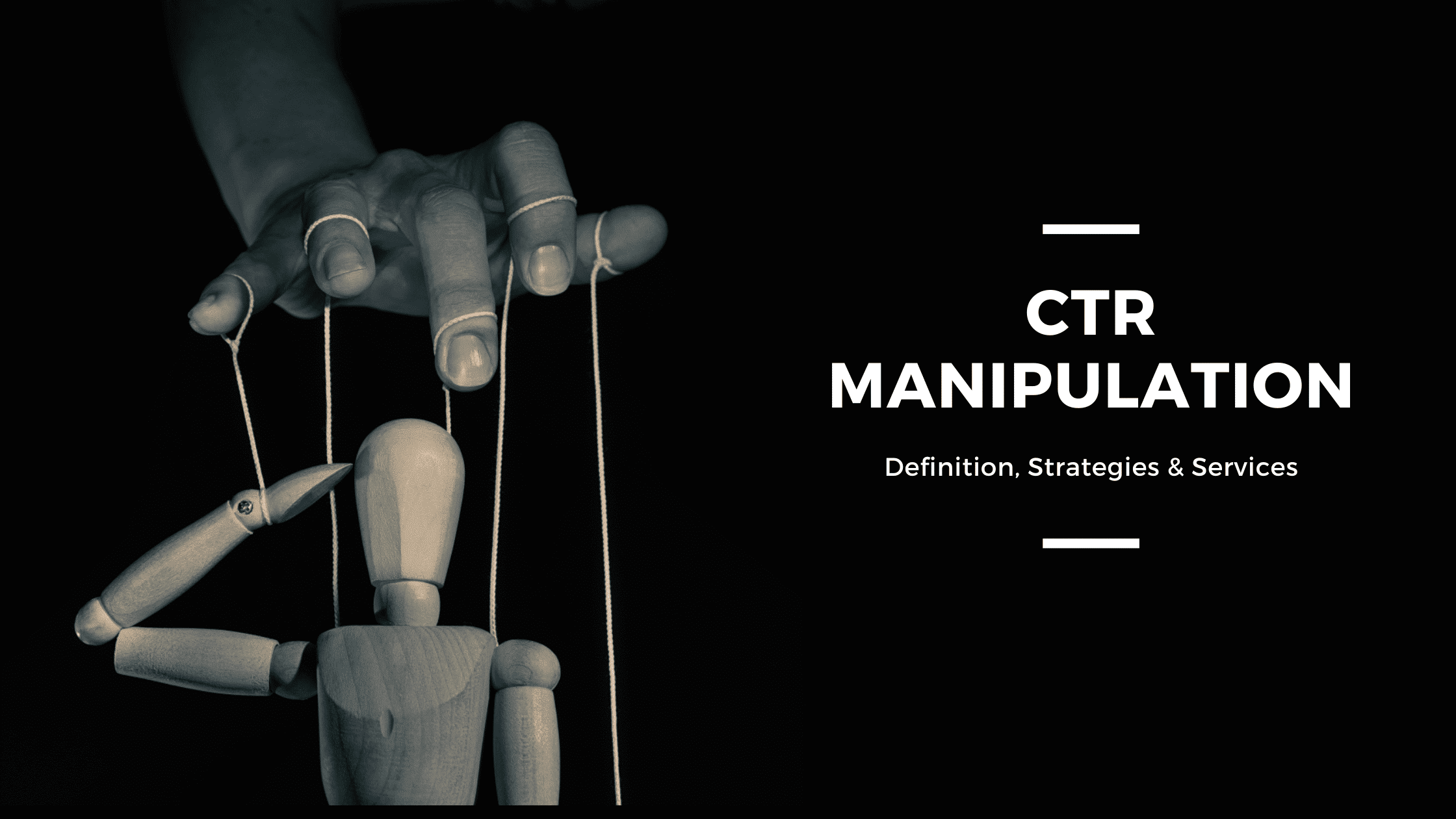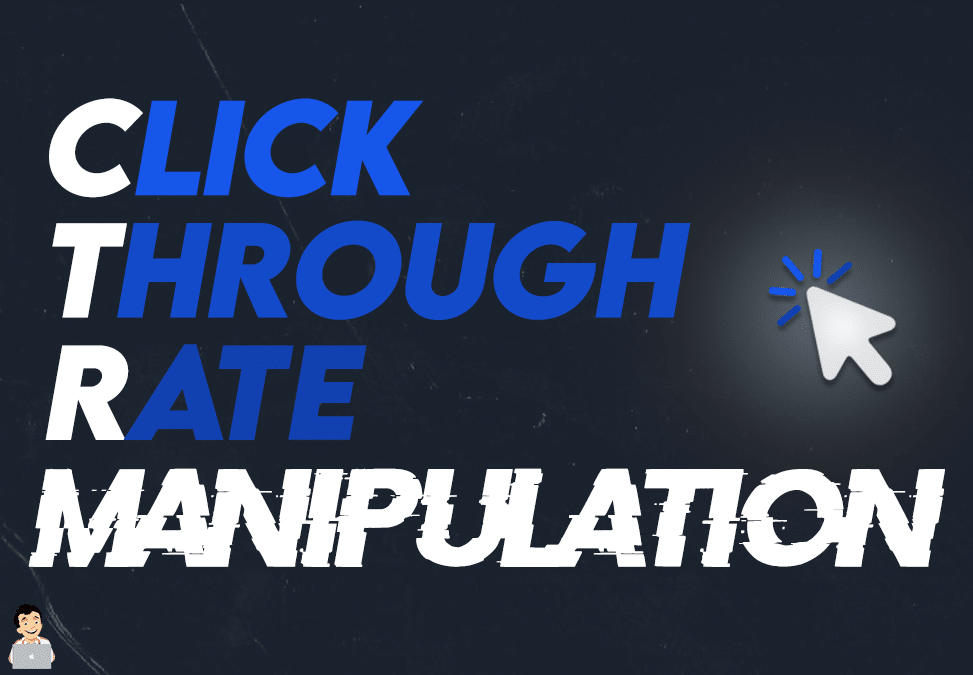CTR Manipulation Press Release: Elevating Online Visibility Via Targeted CTR Methods
Wiki Article
Maximize Your Advertising And Marketing Initiatives With Strategic CTR Manipulation
The idea of maximizing marketing initiatives via calculated click-through rate (CTR) manipulation presents a nuanced strategy to boosting audience engagement. By understanding the emotional triggers that force individuals to click, as well as the importance of customized material and design, online marketers can significantly improve their project results.Comprehending Click-Through Fees
Click-through price (CTR) works as a vital metric in electronic advertising, representing the percent of individuals who click a certain link out of the total that watch a page or promotion. This efficiency indication is necessary for examining the efficiency of online projects, as a higher CTR usually indicates that the material reverberates well with the target audience.Recognizing CTR includes assessing different variables, including the significance of the web content, the positioning of links, and the total user experience. A well-crafted call-to-action (CTA) can substantially influence CTR, encouraging customers to involve even more with the product presented - GMB CTR Manipulation. In addition, the design and appearances of an ad or web page play a pivotal function in recording interest and motivating clicks

Emotional Triggers for Involvement
Engagement in digital advertising and marketing relies heavily on comprehending emotional triggers that encourage users to communicate with material. Numerous psychological actions and cognitive prejudices can substantially affect user habits, bring about higher interaction prices and enhanced click-through rates (CTR)One secret emotional trigger is the principle of shortage. When customers regard that a deal is restricted in time or schedule, they are more probable to take prompt activity. Likewise, social proof, such as reviews or user-generated content, can create a sense of trust and recognition, motivating individuals to engage quicker.
An additional effective trigger is using interest. Stimulating an individual's interest through intriguing headings or visuals can compel them to seek even more details. In addition, leveraging the concept of reciprocity-- offering valuable web content for individual communication-- can cultivate a feeling of obligation to involve.
Psychological charms likewise play a critical role; web content that stimulates sensations of shock, concern, or happiness can drive customers to respond and attach. By properly taking advantage of these psychological triggers, online marketers can develop a compelling story that encourages customer interaction and optimizes their advertising initiatives.
Methods for CTR Adjustment
To improve click-through rates (CTR) successfully, online marketers can employ a range of techniques created to capture customer focus and motivate communication. One essential method is optimizing headings and meta descriptions. Crafting compelling, benefit-driven titles that reverberate with the target audience can dramatically raise the probability of clicks.Additionally, using visuals such as images or videos can considerably boost engagement. Distinctive graphics that pertain to the content can produce a stronger appeal and attract users in. Carrying out A/B this post screening is one more powerful strategy; by try out different variants of advertisement copy, visuals, and call-to-action buttons, marketing professionals can recognize which elements yield the greatest CTR.
One more efficient method is including necessity and deficiency right into marketing messages. Phrases like "limited time offer" or "only a couple of left" can develop a sense of necessity, triggering users to act promptly. Customization also plays an essential function; tailoring material to fulfill the details needs and preferences of your target market can cultivate a deeper connection, more improving CTR.
Measuring and Evaluating CTR Success
Examining and gauging CTR success includes a methodical method to examine the efficiency of advertising strategies implemented to boost individual communications. To achieve this, marketing experts need to first establish clear objectives and crucial efficiency indications (KPIs) relevant to CTR. These KPIs might consist of total click-through rates, conversion rates, and customer involvement metrics.Information collection is a critical action in this process. Using analytics tools, marketers can collect details on user habits, including which aspects of a project are driving clicks and which Find Out More are not. Segmenting the information by demographics, device types, or website traffic resources enables for much deeper understandings into details target market preferences and involvement patterns.
When data is accumulated, thorough evaluation needs to be conducted to determine fads and connections. Utilizing A/B testing can better enhance this process by comparing various variations of ads or landing pages to establish which performs better. Additionally, examining the impact of exterior elements, such as seasonality or market adjustments, provides context for CTR variations.
Eventually, the objective is to derive workable understandings that educate future advertising methods, making certain that efforts are consistently refined to optimize customer interaction and conversion capacity. GMB CTR Manipulation.
Best Practices for Optimization
Efficient optimization of click-through rates (CTR) needs a critical strategy that incorporates best methods customized to the particular goals of an advertising and marketing campaign. First, it is important to craft engaging and relevant advertisement copy that resonates with the target market. Using clear calls-to-action (CTAs) can considerably enhance user involvement, triggering potential clients to click.This data-driven approach enables online marketers to recognize which components produce the greatest CTR, allowing constant enhancement. Guaranteeing ads and landing web pages are mobile-friendly can considerably enhance CTR.

Final Thought

Understanding CTR involves assessing various variables, including the importance of the content, the positioning of links, and the total user experience. A well-crafted call-to-action (CTA) can dramatically influence CTR, encouraging customers to engage better with the material provided. By focusing on enhancing CTR, marketers can refine their techniques, ensuring that their electronic marketing efforts generate maximum interaction and drive wanted outcomes.To boost click-through rates (CTR) effectively, marketing experts can utilize a selection of strategies made to catch individual attention and encourage interaction (CTR Manipulation Service).Analyzing and determining CTR success entails an organized technique to examine the efficiency of marketing approaches carried out to increase user interactions
Report this wiki page